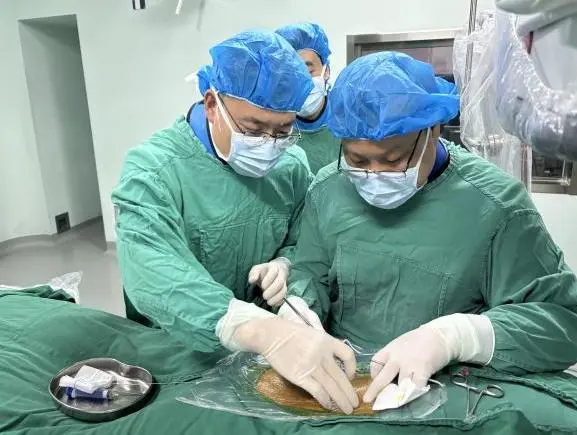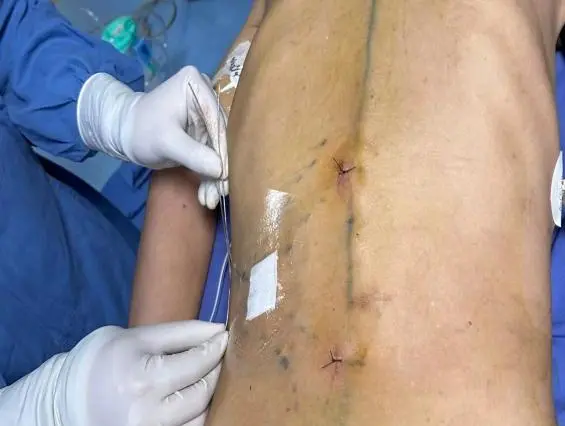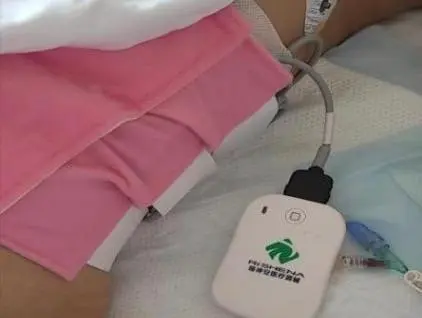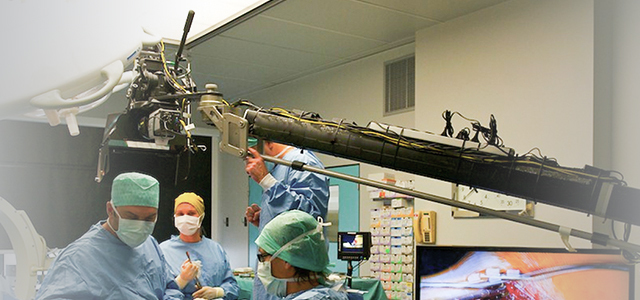Zhengda Fifth Affiliated Hospital Successfully Conducted Short Term Spinal Cord Electrode Implantation Surgery
Recently, the Neurosurgery Department of the Fifth Affiliated Hospital of Zhengzhou University successfully completed short-term spinal cord electrode implantation surgery for two patients in the first ward of the Neurosurgery Department, and the postoperative start-up effect was significant. This surgery is the first to be carried out by the hospital, aiming to bring new hope to more patients with coma and spinal cord injury (paralysis).
Case 1
A middle-aged male who suffered from acute cerebral hemorrhage two and a half months ago underwent surgical treatment at a local hospital and remained in a coma for two months after the surgery. Later, due to hydrocephalus, he was admitted to the hospital for treatment. In the first ward of neurosurgery, a ventriculoperitoneal shunt surgery was performed. Although the postoperative consciousness disorder improved, the left limb showed obvious hemiplegia and continued to be in bed with tracheostomy. A professional caregiver and family member were still needed for continuous care and care.
The patient is the pillar of the family, with elderly on the top and young on the bottom. The family members have an urgent desire for treatment. The supervising physician, Guan Haibo, reported the above situation to the superior physician, Director Shouji Xin. After evaluation by magnetic resonance imaging, brainstem evoked potential, somatosensory evoked potential, electroencephalogram, and departmental discussion, the patient is suitable for short-term spinal cord electrical stimulation minimally invasive surgical treatment.
On April 27th, in the compound operating room of the hospital, Dr. Shouji Xin and attending physician Guan Haibo jointly completed the short-term spinal cord electrode implantation surgery in the neck and lumbar segments, laying a good foundation for patients to remove the tracheal cannula as soon as possible, fully awake, stand up, walk, and return to life.





Case 2
An elderly male who suffered from cerebral and thoracic spinal cord injuries resulting in lower limb paralysis one month ago was transferred from an external hospital to a neurosurgery ward. After active evaluation and discussion, he was given thoracic spinal canal decompression and internal fixation surgery.
Although the left lower limb can move slightly after surgery, the right lower limb still has no obvious movement, and it is difficult to urinate and defecate. Continuous bed rest is required, and family members should take care of it. The patient and their family members have an urgent desire for treatment. One week ago, the department fully discussed the next treatment plan and finally decided to undergo lumbar short-term spinal cord electrical stimulation surgery.

After the surgery, the neural programmable stimulator was successfully turned on, and the two patients had good tolerance and gradually improved clinical symptoms.
At present, the two patients are still receiving comprehensive treatment from the team, hoping that they can recover soon and return to society.
popular science knowledge
Prolonged disorders of consciousness (pDoC) refer to the pathological state in which consciousness is lost for more than 28 days due to various brain injuries such as traumatic brain injury, stroke, and ischemic hypoxic encephalopathy. It can be divided into vegetative state (VS), unresponsive wakefulness syndrome (UWS), and minimal consciousness state (MCS). PDoC patients suffer from severe neurological damage, accompanied by complex functional impairments and complications, with a long and difficult rehabilitation cycle.
What are the treatment methods for consciousness disorders?
The treatment of consciousness disorders is a comprehensive treatment, and there is currently no specific treatment method.
1. Drug therapy: Clinical studies have shown that some drugs can observe temporary or long-term improvements in patients with consciousness disorders;
2. Rehabilitation treatment: including acupuncture and moxibustion, posture conversion training, passive joint activity, swallowing treatment, cognitive impairment training, computational speech training, multi sensory stimulation treatment, music therapy, hyperbaric oxygen, etc;
3. Neuroregulation therapy in neurosurgery: Neuroregulation therapy is a clinical treatment method that uses specific devices to deliver targeted electromagnetic or chemical stimuli to specific parts of the nervous system to alter neural activity. In recent years, it has played an increasingly important role in the treatment of refractory neurological diseases, including early short-term spinal cord electrical stimulation for awakening treatment and permanent implantable stimulator for awakening treatment.
This article is reprinted from "Dingxiangyuan"
Surgerycast
Shanghai Headquarter
Address: Room 201, 2121 Hongmei South Road, Minhang District, Shanghai
Tel: 400-888-5088
Email: surgerycast@qtct.com.cn
Beijing Office
Address: room 709, No.8, Qihang international phase III, No.16, Chenguang East Road, Fangshan District, Beijing
Tel: 13331082638( Liu )
Guangzhou Office
Address: No. 15, Longrui street, longguicheng, Taihe Town, Baiyun District, Guangzhou
Tel: 13302302667 ( Ding )






